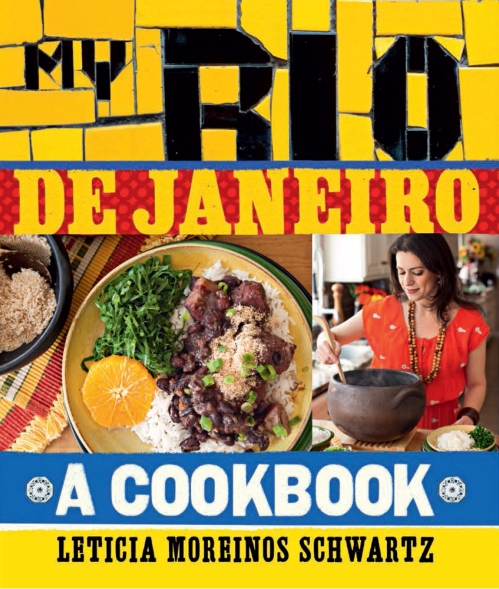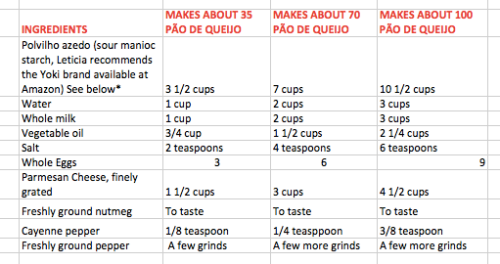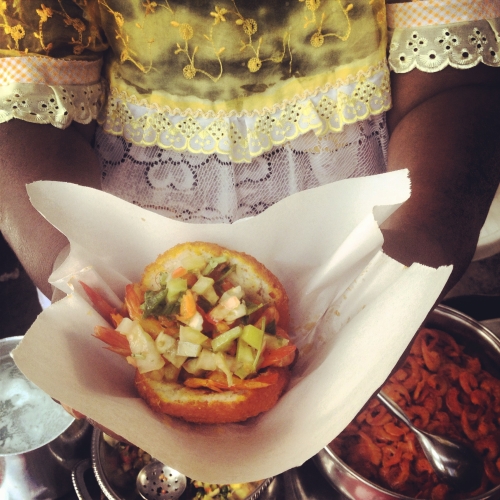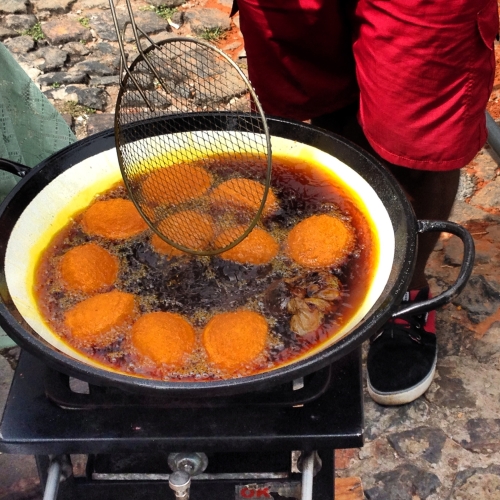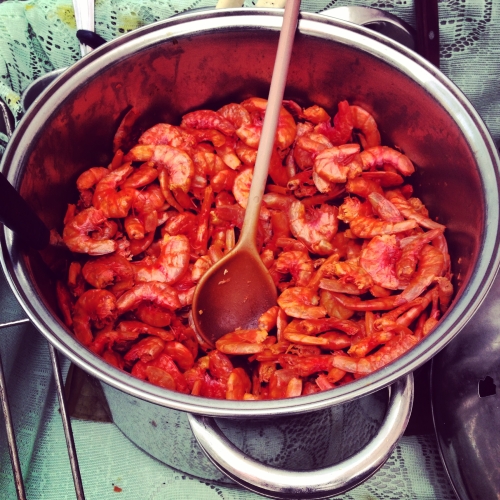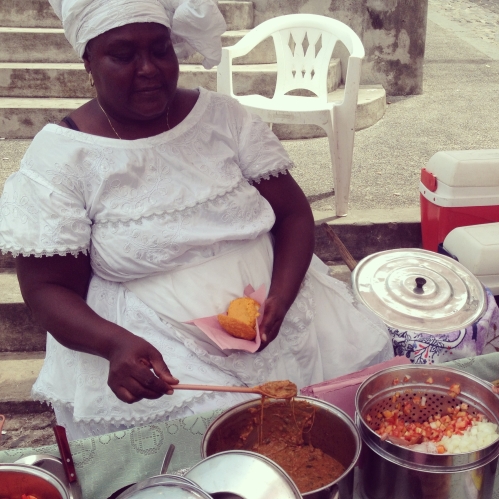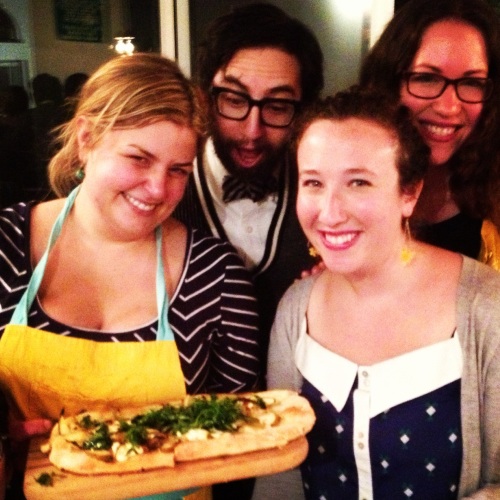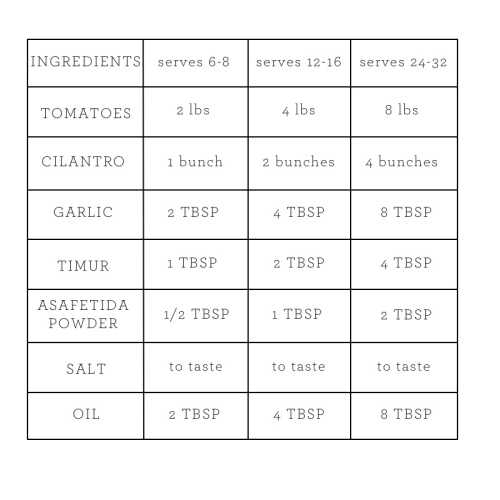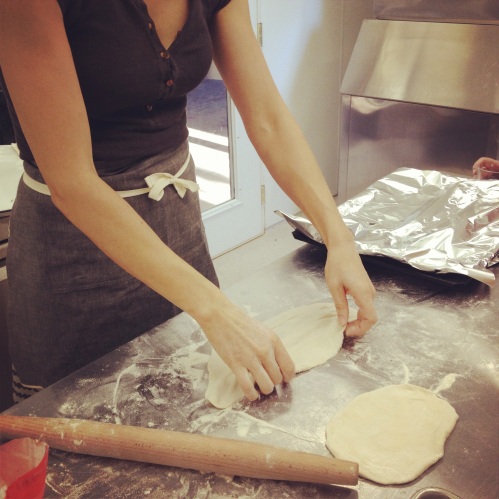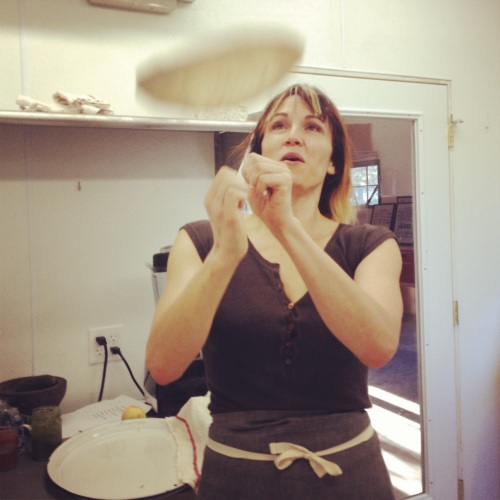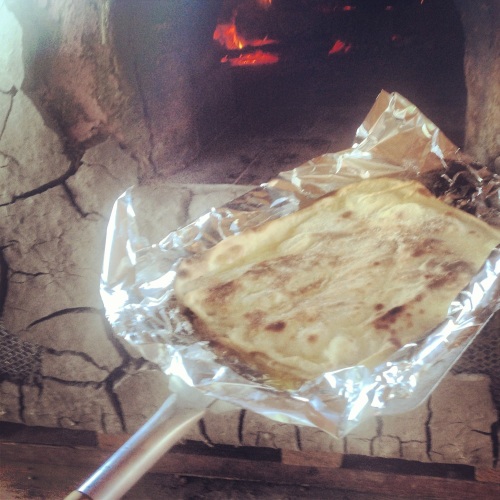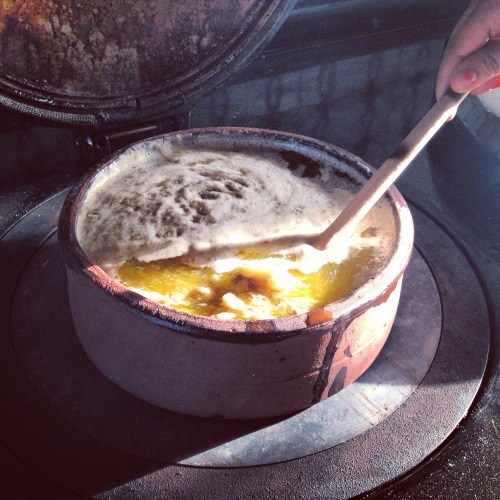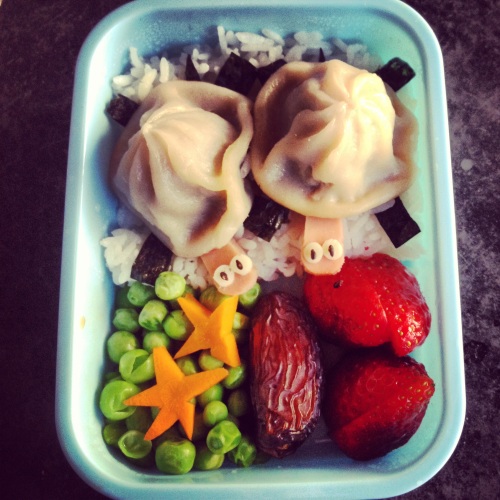Since I returned from Brazil, I have been obsessed with pão de queijo or Brazilian cheese rolls. In search of the best recipe, I turned to chef and cookbook author Leticia Moreino Schwartz, who has been making pão de queijo since she was a little girl. In her wonderful book, My Rio de Janeiro: A Cookbook, Leticia aptly describes pão do queijo as a “golf sized little roll that is chewy, cheese, and steamy, almost succulent…the result of yucca alchemy…. it’s quite difficult to eat just one.”
Made with sour manioc (tapioca) starch which is extracted from yucca (aka manioc or cassava), Pão de queijo is the national bread of Brazil and can be found all over the country; eaten at all times of the day: slathered with butter for breakfast; enjoyed with cup of coffee for an afternoon snack, or served as a side with dinner. When I asked Leticia to tell me a story about a time she made it for a celebration she said ” I make pão de queijo for every party!”
Pão de queijo is ideal to make for big gatherings because the dough can be easily made ahead and frozen in big batches. “This is what made it viable to take the little cheese ball from our grandmother’s oven to a global scale,” she said adding, “Today pão de queijo is available all over the world!” You can buy mixes or pre-made and frozen in many different flavors. But of course, the best are made at home and eaten “one minute after they come out of the oven.”
Big Batch Notes: The best way to make pão de queijo for a crowd to make the dough ahead of time, roll it into balls and put on a sheet pan to freeze (lined with parchment paper or silpat). Once the balls are frozen, place them into a plastic bag. Then shortly before the event, you can bake the rolls directly from the freezer for about 12-20 minutes (depending on the oven and the size of your rolls) until puffy and golden brown.
Special ingredients: The secret ingredient is povilho azedo also known sour manioc starch, different from sweet manioc starch. Although I have made mine with tapioca starch, to make truly authentic pãao de queijo you will need to use this ingredient, for which there is no American brand but can be easily purchased on available on Amazon. Leticia recommends the Yoki brand. (For more information about this ingredient, see below).
Pão de Queijo
Recipe by Leticia Moreinos Schwartz
Brazilians have a fierce love affair with pão de queijo. From Belém do Pará in the north of the country to Rio Grande do Sul, in the south, and anywhere in between, pão de queijo has the power to ignite conversations and direct dinner habits.
In Rio, you will find pão de queijo all over town. Accompanied by a cafezinho on a side in the middle of the afternoon, this habit definitely keep cariocas happy. Another common way of finding pão de queijo is in restaurants, especially in churrascarias, pão de queijo is served in a little basket as part of the couvert. That alone can change the destiny of your menu ordering. If that basked is full of a precious one, the restaurant owner should think twice about serving it. At Esplanada Grill, a fine churrascaria in Ipanema, I have to do a little bit of transcendental meditation before a visit since their pão de queijo is simply spectacular! That’s the inspiration for this recipe.
1. Place the manioc starch in the bowl of an electric mixer fitted with the paddle attachment. Set aside.
2. Place the water, milk, oil, and salt in a small saucepan, and bring to a boil. Immediately pour the hot liquid mixture in one stroke into the starch and turn the machine on at low speed. Mix until the dough is smooth and starch is all incorporated, about 2 minutes. Pause the machine and add the eggs. Continue to paddle at low speed until the dough develops structure and turns pale yellow about 5 minutes. The dough will feel sticky.
3. Add the cheese and mix until well incorporated.
4. Season to taste with nutmeg, cayenne, and freshly ground pepper.
5. Transfer the dough to a bowl, cover with plastic wrap, and chill for at least 2 hours in the refrigerator.
6. Preheat the oven to 350˚F. Line a baking sheet with parchment paper.
7. Wet your hands with olive oil (alternatively, you can flour your hands with manioc starch) and use an ice cream scooper to make 1-inch balls, rolling them with your hands. Place them on the baking sheet, leaving about 112 to 2 inches between each (you can freeze them at this point by storing them in a zip-lock bag for up to 3 months).
8. Bake the cheese rolls in the oven until they puff up and look lightly golden brown, about 12 to 14 minutes. To ensure even baking, rotate the pan once during baking time.
9. Remove the baking sheet from the oven and place the rolls in a basket lined with a nice cloth. Serve immediately while they are still at their warmest and chewiest.
*Manioc (Tapioca) Starch
Manioc Starch (povilho doce) and sour manioc starch (povilho azedo) are both extracted from yucca (aka manioc or cassava). When it comes to manioc and tapioca starch, it can get very confusing because different American brands call these products different names.
Povilho Doce (manioc starch or sweet manioc starch):
Goya calls it Tapioca Starch, but Bob’s Red Mill calls it Tapioca Flour, and I call it manioc starch in this book.
Povilho Azedo (sour or fermented manioc starch):
No American brand makes the Brazilian equivalent of sour manioc starch (at least not yet), so when a recipe calls for this ingredient, do not substitute for an American brand. I recommend Yoki or Gloriasul brands both available on Amazon.
Farinha de mandioca (manioc flour):
Although this flour is also extracted from the yucca vegetable, the process is completely different from making starch. Here, the yucca vegetable is not washed but ground, then squeezed in a cloth to eliminate any vegetable juices, sieved, and lightly toasted. Think of it as breadcrumbs. Farinha de mendioca is used to make another important staple of Brazilian cuisine: farofa.


